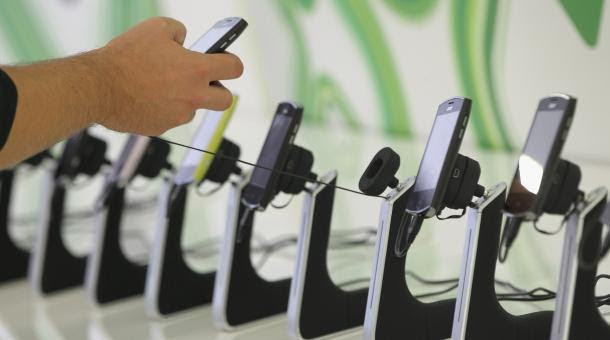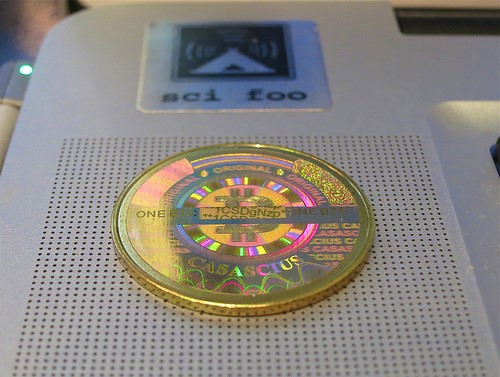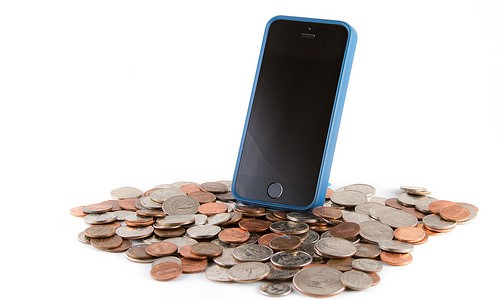Move aside, Apple Pay: Alternative mobile payment options based on your needs

Sure, you know Apple Pay – 23% of iPhone users have used it at least once. And you’re probably aware of PayPal, which has actually existed since 1998 in its web app form. But are you sure you’re using the mobile payment option that suits your personal needs? Let’s take a look at a few more innovative ways to pay using your mobile phone, phablet or tablet that you may not be familiar with. With mobile and wearable payments expected to reach $100 billion by 2018, it’s good to keep up with trends and see how you can make them work for you.
Bitcoin Wallet
For those who buy in different currencies and the privacy-conscious
Many less tech-savvy users are perhaps baffled by the concept of Bitcoin payments. However, those who’ve taken the leap have seen some important benefits over other options. With Bitcoin payments over mobile, you can rest assured that there are minimal transaction fees (often none at all) and that bank and currency exchange fees are out of the picture. In fact, that’s why Bitcoin wallet payments are favoured by travellers as well as diverse online businesses. For instance, take BitCasino.io, our favourite casino on the web, which allows gamers to play slots, blackjack and other popular casino games for bitcoin instead of fiat currencies and has even written a whole guide to put new players at ease with the cryptocurrency.
This way, gamers are competing on an equal level and know what exactly they’ll be making. Based on blockchain technology, apps such as Airbitz Bitcoin Wallet (for iOS and Android), and Bitcoin wallet (for Android and Blackberry phones) allow you to pay online and in stores in a safe, reliable and quick way. According to the International Business Times, the number of outlets accepting bitcoin payments is on the rise, with diverse merchants and service providers from Greenpeace to Microsoft featured on the list. Privacy is also another strong argument for mobile payments by Bitcoin, since the person you’re paying does not need your name or personal details.

Boku/Pay by Mobile
For the unprepared and those who dislike banks
Founded in 2000, Boku is a payment platform with a distinctive advantage: it can be used by individuals who don’t have a bank account or credit card. If you’re wondering who that is, the Federal Deposit Insurance Corporation reports that 7.7% of the US population is unbanked and 17.9% is underbanked. There are also a lot of people who simply prefer to not link their bank accounts and cards to other services but still want to take advantage of instant payments by mobile.
Boku is just one of the payment platforms which realized that there was an untapped resource when it came to payments: users’ mobile phone bill. Merchants have to sign up to Boku to be able to receive payments, but buyers don’t need to do anything at all in advance. You can pay by mobile, online or in person – simply confirm the purchase by SMS and next time you receive your monthly phone bill, you’ll see the payment in question listed under your regular subscription. This hassle-free method requires no downloads or installations and is already accepted by the Google Play Store, Sony Playstation Store and Spotify – and a whole lot of other merchants.

Facebook Messenger
For social media fans who want instant transactions
Yes, Facebook also offers payment through Facebook Messenger. This little-known method has users link their account to a US bank debit card. After that, a tap of a button allows users to send money to anyone they’re chatting with – as long as that person has also added a debit card. A few months ago at TechCrunch Disrupt SF, Facebook’s Dave Marcus announced that the platform has made this technology available to its more than 30,000 chatbots. Popular brands such as General Electric and Pizza Hut have already started taking advantage of Facebook’s chatbot technology.
This development means that Facebook users will be able to send payments to a brand’s chatbot without having to visit a website or use an external app. The chatbot will then automatically process it and respond. This method is currently best suited for people who need to send money to friends and family often, but the introduction of chatbot payments may well mean that it will be relevant to a much, much wider audience soon.



